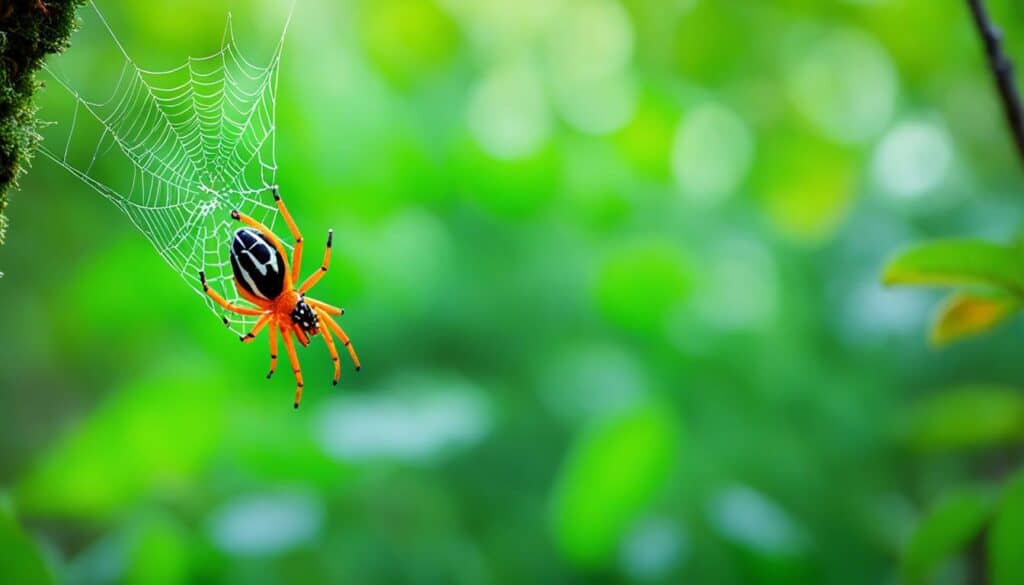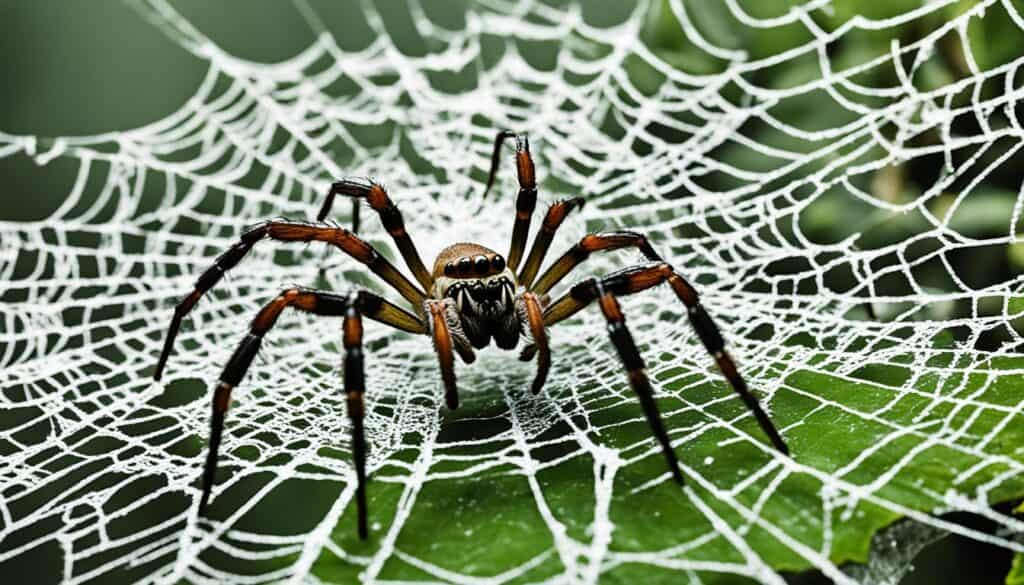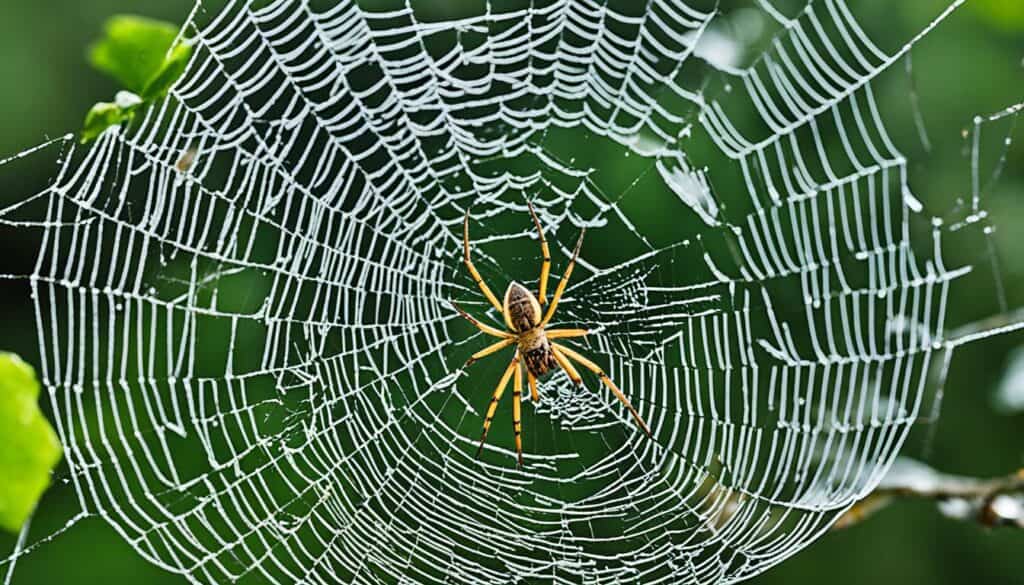Did you know the Joro spider can grow beyond 10 centimeters long? For those who love the outdoors, this fact might be unsettling. These striking spiders, Trichonephila clavata, come from eastern Asia. They appeared in northern Georgia, U.S., around the early 2010s, probably through shipping.
Joro spiders spread far by using a method called ballooning. This occurs when they’re very young. Their patterns of black, blue, magenta, and yellow might look nice to some. Yet, the thought of my yard filled with these large spiders is not pleasing. Their spread across 120,000 square kilometers in North America marks a big impact on the East Coast’s environment.
Joro spiders are big but shy. The main issue is not their effect on people. Studies show they’re not dangerous to humans or pets. But, they could outcompete local spiders. This might hurt the variety of spider species we have.
Key Takeaways
- Joro spiders can grow over 10 centimeters, making outdoor lovers wary.
- They originated from eastern Asia and have moved across the southeastern United States since the early 2010s.
- Using ballooning, Joro spiders have spread widely in North America.
- While they aren’t a threat to humans or pets, they could disrupt local spider populations. This affects spider diversity.
- Their presence over 120,000 square kilometers shows their big ecological effect on the East Coast.
Joro Spider Invasion: How It All Began
It all started with international cargo. The Joro spider hitched a ride to the United States, likely arriving in Georgia. These spiders weren’t just any newcomers; they had vibrant yellow and black stripes and were ready to survive here.
Scientists have followed their spread closely. These spiders first showed up in 2010 in North Georgia. Then, they began moving into states like South Carolina, North Carolina, and Tennessee. People started noticing them, which must have been quite a surprise.
Now, about 120,000 square kilometers in various states have Joro spiders as of October 2022. And they’re not stopping. They could spread across the Eastern Seaboard. Their ability to survive cold snaps impresses scientists.
Joro spiders originally come from Japan. Japan’s climate is a lot like parts of the U.S. These spiders use ballooning to travel with the wind. And yes, humans helped them spread, through cargo and other activities.
But there’s no need to worry too much. Joro spiders are pretty harmless. Their venom doesn’t really affect humans; their fangs are too small. They might eat a lot of native bugs, but they’re not a big threat. Whether they’ll change our ecosystems significantly remains to be seen.
The Spread of Joro Spiders: Regions Affected
The Joro spider made its U.S. debut around 2013. Now, it’s known for its fast metabolism and heart rate, which is much higher than its relatives. This makes it super fast, like the Usain Bolt of spiders.
First seen in Georgia, the Joro spiders have moved to South Carolina, North Carolina, Tennessee, and Alabama. Thanks to their ballooning ability, they might even reach southern Canada. That shows how well they adapt to new places.
Indeed, Joro spiders handle cold better than many other spiders. They have taken over Japan and are now spreading in the U.S. It seems they’re on a mission to conquer new areas with their silk.
Humans have helped them travel by cargo and personal trips. Our moving around has helped these spiders spread to new states. It took them about ten years to move from Georgia to nearby states.
However, don’t expect them in Arizona anytime soon. The dry climate and winds there are likely to keep them at bay. But they could live in an area of 120,000 square kilometers. For sure, Joro spiders are becoming a fixed part of North America.
Impact of Joro Spiders on Local Ecosystems
Joro spiders came to the United States about 8 or 9 years ago, causing quite a stir. Since they arrived, there’s been a drop in native spider numbers. This is because of the Joro’s unique way of moving around. The University of Georgia has started a project. They want people to count Joro and native spiders. It’s their way of learning about Joro spiders’ effects on our ecology. Who knew counting spiders could be your homework?
People are worried these new spiders might harm our local spider populations. It seems like a real-life spider version of Survivor is happening right outside our doors! But, think twice before using pesticides on Joros. Removing them by hand is better and safer for other creatures.
Opinions on Joro spiders are divided. Some think they’re not too big of a problem. Yet, others suggest we should study their impact carefully. Their arrival has even made more people interested in studying spiders. Now, many are keen to understand more about these colorful invaders.
But it’s not all bad news. Joro spiders eat pests like stink bugs and mosquitoes. That could be good for us. Scientists are now looking into what eats Joro spiders. It’s part of understanding how they fit into our world. This Joro spider story shows how one new creature can shake things up. Finding balance in nature can be as complicated as untangling a web.
Human Interaction: Living with Joro Spiders
Imagine this: You’re sipping coffee on your porch and spot a Joro spider. Its bold yellow and blue-black design catches your eye. For someone scared of spiders like me, it’s quite a moment. Many people find Joro spiders scary. But let’s look at the real facts about them.
Though large and often feared, Joro spiders are actually harmless. Their bites might cause discomfort but aren’t deadly. They’re more likely to run away than attack. So, there’s no need to worry about them invading your home.
Getting used to living with these spiders means accepting them in urban areas. As cities expand, Joro spiders adapt alongside. It’s a bit like they follow where we pave.
What does this mean for us? We should learn more about these creatures. Realizing they help control pests could improve our views. Instead of fearing them as invaders, we could consider them as unique roommates we never expected.
Experts like David Coyle and José R. Ramírez-Garofalo think Joro spiders will move north. Places like New York and New Jersey could see them soon. They first appeared in the Southeastern U.S. in 2021, and it seems they want to spread.
Now, communities are learning to live with Joro spiders. It’s about coexisting and managing them responsibly. They’re probably as scared of us as we are of them. With a bit of humor and care, we can make our cities welcoming for these spiders. This attitude shift turns fear into a chance to learn and grow together.
So, living with Joro spiders isn’t as bad as it sounds. It can be an interesting adventure rather than a terrifying experience. Our initial fear can turn into a peaceful coexistence with these captivating creatures.
Economic Impact and Control Measures
Let’s dive into “Joro-mageddon!” These Joro spiders have become uninvited guests. They’re tough to kick out. People are puzzled over the economic implications of Joro spiders. They wonder how these spiders will hurt our pockets. Since 2014, they’ve spread mayhem in northern Georgia and nearby states.
These spiders reproduce rapidly. A single female can lay up to 500 eggs. This means massive spider invasions could happen. They can spread very far, fast. This can affect local crops by eating helpful insects. It’s a big risk for our economy and environment.
Experts suggest several control strategies for these invasive spiders. They recommend monitoring, ecological methods, and spreading awareness. But controlling them is not easy. We must balance spider management with minimal harm to our ecosystems. It’s a delicate task.
There are also public health concerns. Fortunately, Joro spiders haven’t harmed humans or pets. But they can still stress us out. Imagine seeing your garden covered in webs. The cleanup cost is high for homeowners and cities alike. Such expenses add up quickly.
If you need me, I’ll be buying more fly swatters and keeping my fingers crossed. Every effort counts in managing invasive species. It matters for our wallets, our mental health, and the planet.
Research and Ongoing Studies on Joro Spiders
Exploring Joro spider research is like joining a unique nature show. It’s surprising how these parachuting spiders keep us hooked with their mysteries. Did you know they’re the stars of ongoing scientific stories full of twists?
Scientists are busy digging into every aspect of Joro spiders. They study how baby spiders glide on wind currents and catch rides on cars. It’s funny how their travel stories are way cooler than ours! A study found them traveling 470 kilometers to near Niagara Falls. That’s serious spider determination!
Climate change puzzles researchers by favoring Joros in the north over Georgia. It seems these spiders can handle cold winters in Canada. This could mean they’ll spread to new areas like the Great Lakes, according to scientists David Coyle and David Nelsen.
Experts are watching how Joro spiders might affect local wildlife. While they’re harmless to humans, their impact on native species is being closely watched. With sightings increasing, scientists aim to understand their effect on our environment better.
Conclusion
Joro spiders are compelling yet concerning invaders from Japan. Now, they’re spreading through the Southeast U.S., possibly even to New York. Their ability to quickly adapt and reproduce is impressive. This makes them a significant challenge for our ecosystems.
These spiders are moving into areas like Maryland, thanks to similar climates to Japan. Experts believe they might invade New York and New Jersey soon. Although not harmful to humans, they threaten our ecosystems. They can harm native species and beneficial pollinators.
So far, there’s no sure way to stop these spiders. This makes it crucial for communities to stay informed and vigilant. If you’re worried, consider contacting pest control. Research continues to find ways to manage their spread. Responsible journalism and public awareness are essential in facing this ecological challenge.




